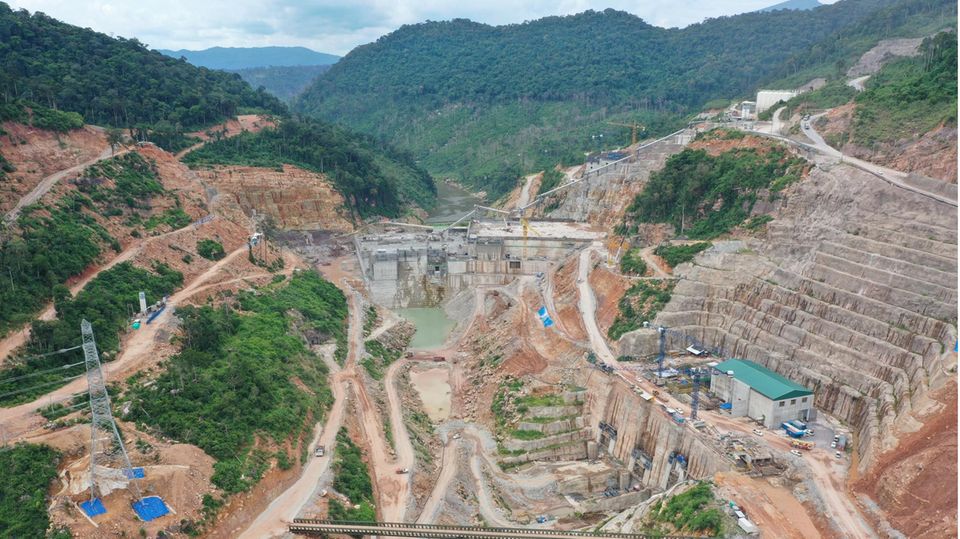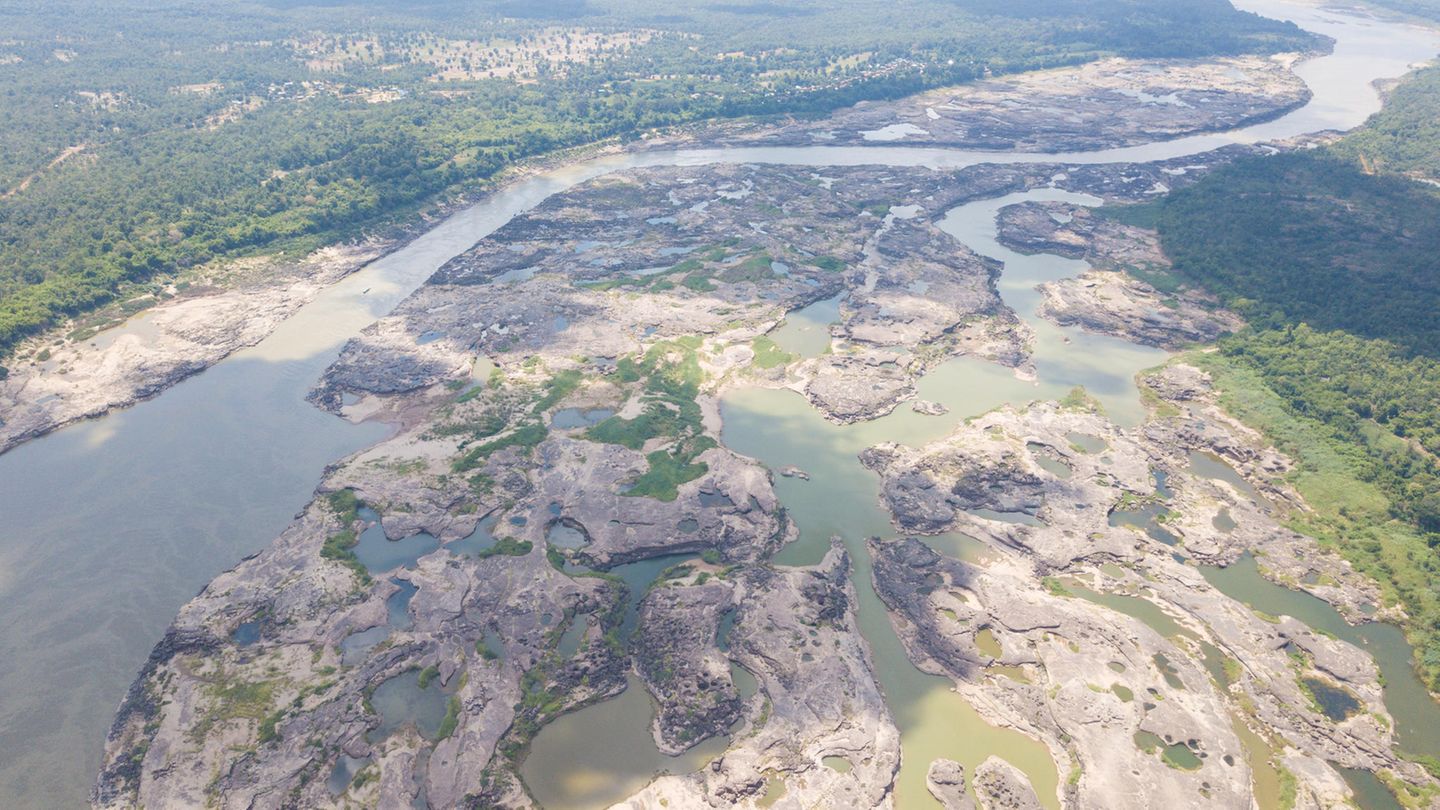The Mekong is essential for the survival of 1.6 billion people in Southeast Asia. China exploits this dependency. The Middle Kingdom has recognized that water can be a weapon. And use them.
“The mother of all water” – that’s what the mighty river Mekong is called. It is the third largest river in Asia and one of the largest inland bodies of water on earth. A large part of the continent depends on it. As a source of drinking water, a transport route and, last but not least, to fish in it. Just ten years ago, the river reliably supplied the countries of Myanmar, Laos, Thailand, Cambodia and Vietnam with sufficient water. But in the meantime the torrent has become a trickle in many places. Entire regions have dried up, there are hardly any fish left, farming has become almost impossible.
But unlike in Europe, which is hit by a historic drought this summer, climatic changes have little to do with the river drying up. The reason for this lies in Beijing: the government of the Chinese Communist Party.
China uses the Mekong River as a weapon
The Mekong has its source in the Tibetan Plateau. It is the third largest ice field on earth after the Arctic and Antarctic. China sees this as its territory. And so the country claims ownership for every liter of water that springs from the plateau, explains China correspondent Tamara Anthony in the ARD format “Atlas”. The top ten rivers on the Asian continent have their source in the Tibetan Plateau. For a long time this was not a problem – there was and is enough water for everyone. But since the late 1990s, China’s previously liberal water policy has changed.
Due to the country’s incredibly fast growth, his thirst grew ever greater – for drinking water, but also for energy. China started building dams. Mainly to generate energy. About a fifth of China’s electricity is generated by hydropower, Anthony said. But in addition to generating energy, the water has long since become a means of exerting pressure on the neighboring countries, which are so dependent on “Chinese” water. The threat was and is always the same: “If we want, we’ll turn off the tap.”
And that is exactly what China has been doing in recent years. Almost half of all dams in the world are in the Middle Kingdom – almost 22,000. Sometimes as high as the Eiffel Tower and hundreds of meters wide. China has built eleven mega dams in its own country since 1995. There were also others in neighboring countries such as Laos, where China financed construction in order to make the countries more dependent. Water has become liquid gold for the Middle Kingdom.
The reason for the construction of these buildings is also fed by a Chinese trauma: 3.7 million Chinese died in a flood disaster in 1931. Since then, the country has made every effort to control its rivers.
Eight of the last ten droughts in the southern Mekong occurred after the construction of the first mega dam
But that turns out to be difficult, especially on the Mekong. About 2000 kilometers of the river flow through Chinese territory. Extreme currents make it dangerous – but also attractive for energy production. So China continues on its course – to the chagrin of the countries fed by the Mekong. Eight of the last ten droughts in the southern Mekong occurred after the construction of the first mega dam.

The Chinese mega dams have meanwhile upset the entire eco-rhythm of the river. Even before they were built, the level of the Mekong dropped in the summer – but much less than it is today. Fishing was still possible, 70 million people lived off what the Mekong gave them. They could rely on the river to provide them with a food source or they could sell the fish that landed reliably in the nets.
During the rainy season, the river swelled. Sometimes flooding was normal. And the people who lived on the banks of the Mekong and its tributaries adjusted to it. Rice fields were planted, the Mekong washed over them, agriculture worked.
Between drought and flood
Things are different in these areas today. In the rainy season, China sometimes holds back so much water with its dams that extreme droughts regularly occur in the southern regions. But because even the strongest structure cannot last forever against the force of nature, the operators of the dams have to release water regularly. And they do. Unannounced.
Cities and villages are then suddenly confronted with enormous masses of water. In parts of Laos, for example, the water level of the Mekong can rise by 1.5 meters in a very short time if China opens its floodgates, reports Deutschlandfunk Kultur. The consequences can be landslides and swaths of land washed away. In some cases, China released so much water at once that fields in Thailand were flooded so badly that the harvest died. If the locks close again, the level drops just as quickly.
Water is China’s greatest strength – and its greatest weakness
But why is China making this huge and selfish effort? Just like the countries that China is putting pressure on with its water policy, the Middle Kingdom is dependent on the water that flows from the Tibetan Plateau into the Mekong, among others. The Chinese government has been trying to turn this weakness into a strength for years. On the one hand, China literally has more and more mouths to feed. While the 1953 census counted almost 580 million inhabitants, in 2020 there were more than 1.4 billion.
On the other hand, parallel to the rapid population growth, industrialization in the country has also progressed further and further. So strong and so fast that little or no value was placed on environmental protection. We see the result today: “80 to 90 percent of the ground and river water in China is too dirty to drink,” explains Anthony on ARD.
So the country needs the water that melts from the glaciers of the Tibetan Plateau. If the water runs dry, so will China’s growth. And the country wants to prevent that with all its might.
And the situation could get even worse. China has announced plans to build eleven more super dams in the coming years. According to the World Bank, it fears that, among other things, more than 1.7 billion people in Asia will suffer from water shortages by 2050.
This is already a reality for the countries on the Mekong. With its dams, China is drying up one of the world’s largest rivers in order to assert its interests. 70 million people are already suffering from the lack of water in the Mekong. There could be even more in the future.
Sources: , , , ,
Source: Stern
David William is a talented author who has made a name for himself in the world of writing. He is a professional author who writes on a wide range of topics, from general interest to opinion news. David is currently working as a writer at 24 hours worlds where he brings his unique perspective and in-depth research to his articles, making them both informative and engaging.




